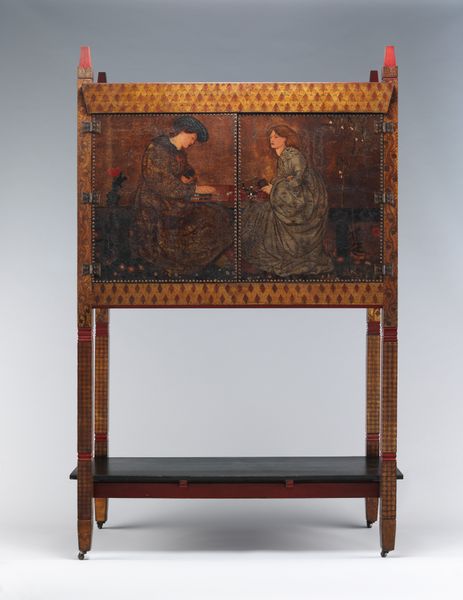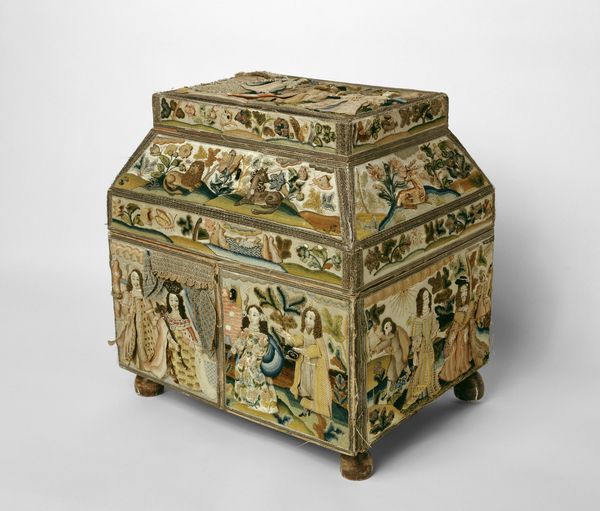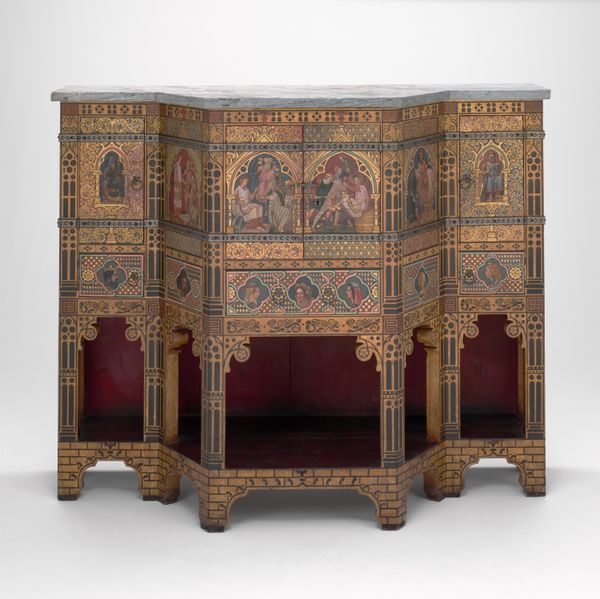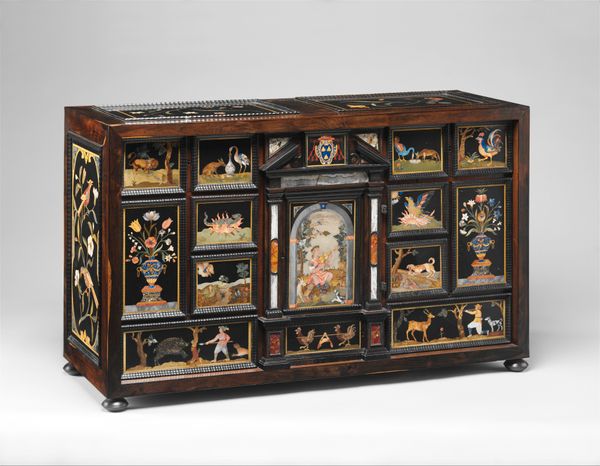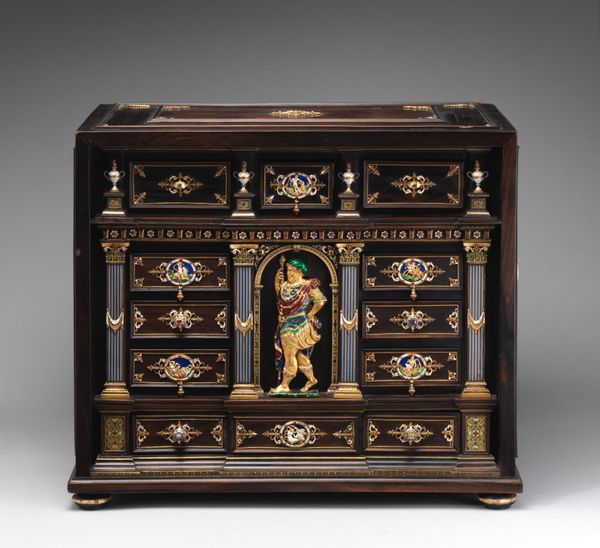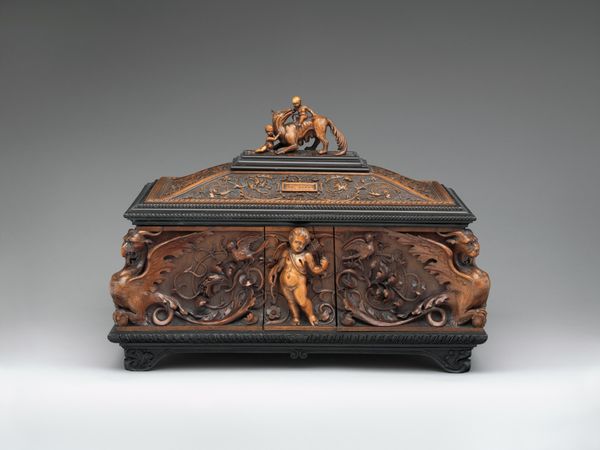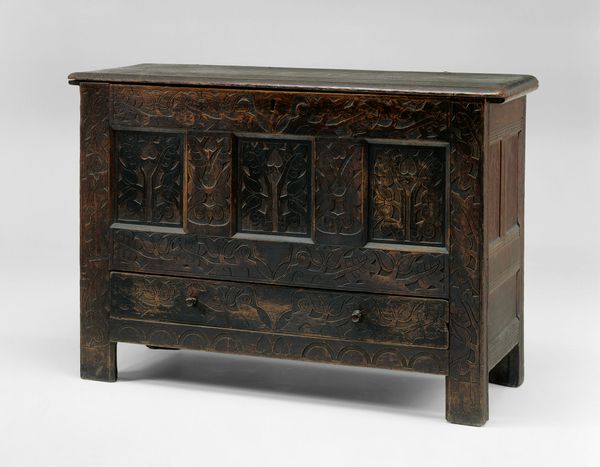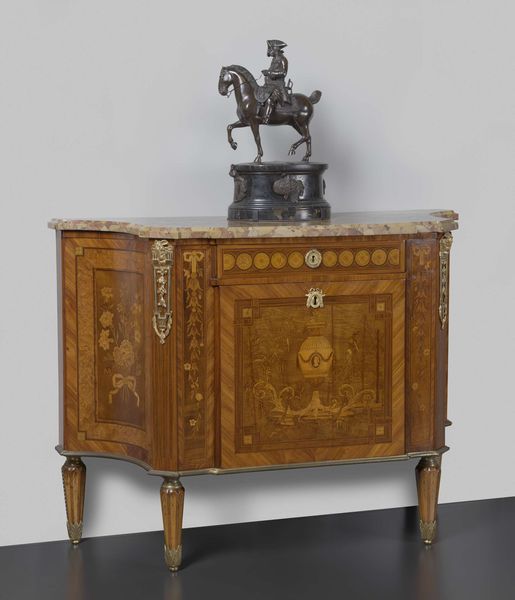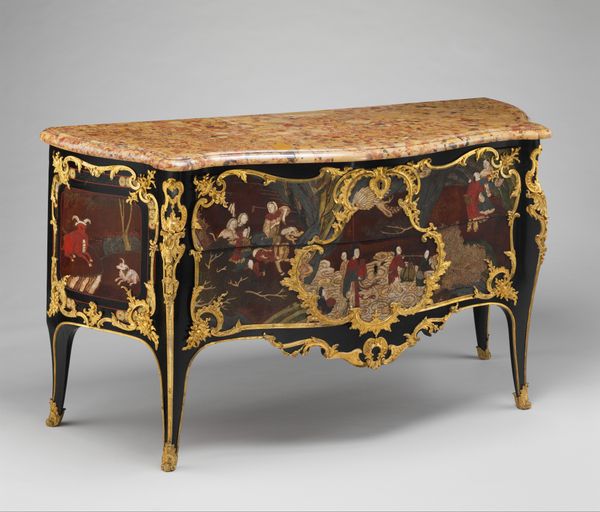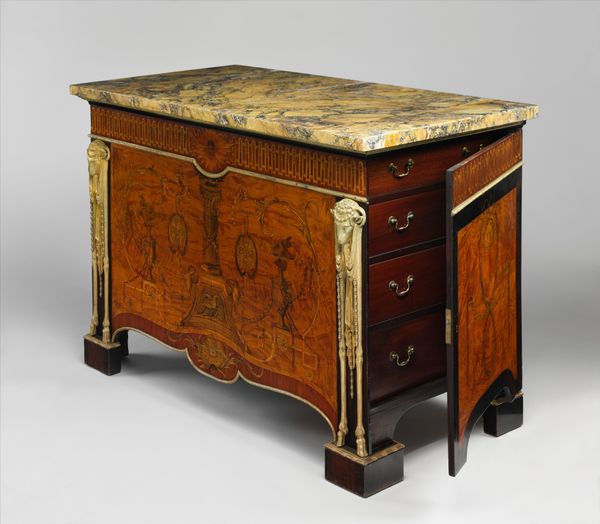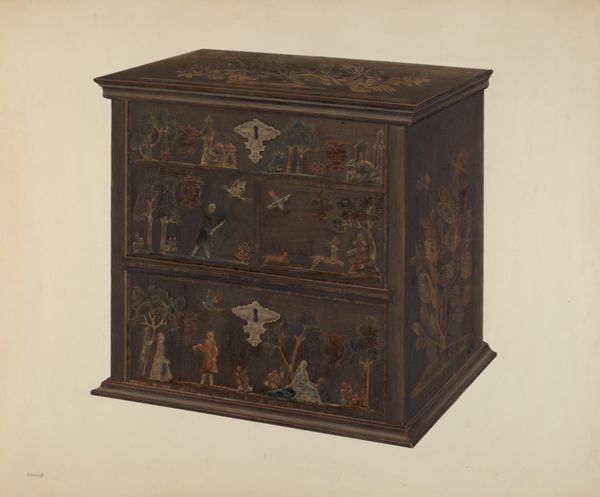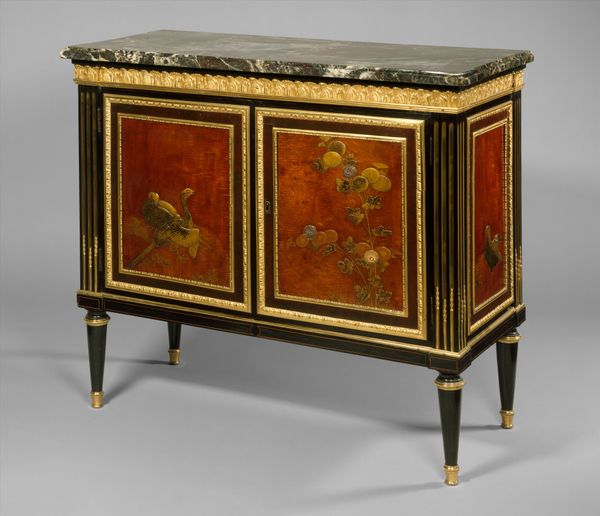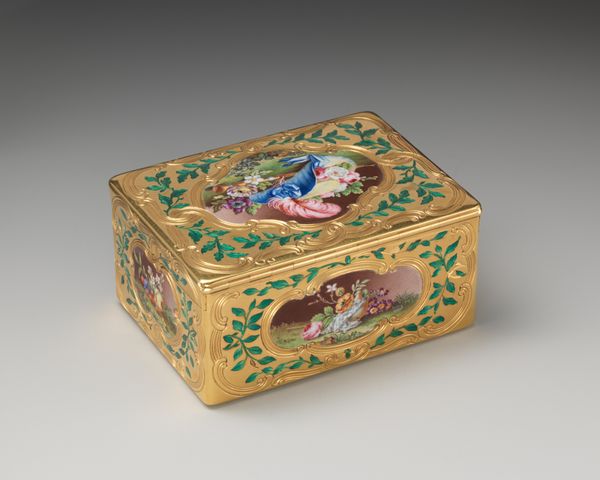
carving, glass, sculpture, wood
#
wood texture
#
art-nouveau
#
carving
#
landscape
#
figuration
#
glass
#
earthy tone
#
sculpture
#
wood
#
decorative-art
Dimensions: 101 × 120 × 60.5 cm (39 3/4 × 47 1/4 × 23 13/16 in.)
Copyright: Public Domain
Curator: This intricately carved cabinet is Paul Gauguin's "Earthly Paradise," created in 1888. The piece incorporates wood, glass, and features figuration across a landscape backdrop. Editor: It’s immediately striking, isn't it? Primitive almost, with these flattened figures. There’s a definite sense of longing, or perhaps…yearning for an untouched space, a prelapsarian innocence? Curator: The cabinet form itself complicates this idea of untouched space, though. The joinery, the hinges... all testify to Gauguin's labor as a skilled craftsperson as much as an artist channeling raw, natural expression. Note how the textural quality of the wood itself adds a distinct character to the whole structure. Editor: Right. We should consider the social context, too. Gauguin was operating within a colonial system. That "untouched paradise" he was seeking—the notion of it as somehow purer or more authentic—is directly implicated in the power dynamics of the time. It begs the question: for whom is this paradise, exactly? And at what cost? Curator: Well, he was undeniably invested in accessing alternative models of art making, so we have to acknowledge that. The wood carving emphasizes the labor behind it all, turning against notions of fine art existing purely in the realm of the conceptual, separate from manufacture and construction. Editor: Definitely. The figures, though seemingly idyllic, have a quiet assertiveness to me. Especially the female forms along the lower part, each embedded as integral parts to the piece. Gauguin positions women to engage actively with both space and perception, while complicating Western assumptions concerning them. Curator: Consider, also, the choice to display these carved forms *within* a cabinet—a functional, utilitarian object. There is a play here, questioning the value systems of art and craft, disrupting clear categories. Was it created as decorative art, fine art, or both? The answer shifts based on the circumstances of display and reception, which emphasizes how it resists neat art historical classification. Editor: Absolutely. The piece speaks to how these questions reflect larger sociopolitical discussions about labor, race, and gender during Gauguin’s time, while simultaneously maintaining relevance within current discourse regarding marginalization, representation, and agency. Curator: So, a cabinet then… but also, perhaps, a subversive proposition. Editor: Exactly! "Earthly Paradise," far from offering a simplistic view, is a layered testament of its own troubled historical moment.
Comments
No comments
Be the first to comment and join the conversation on the ultimate creative platform.
